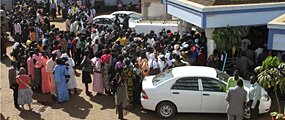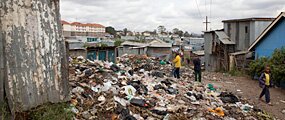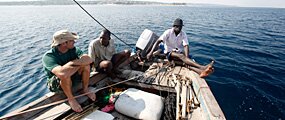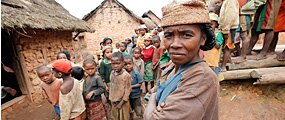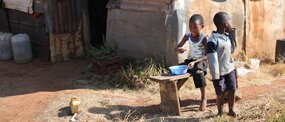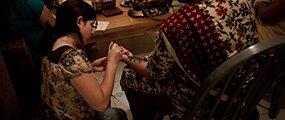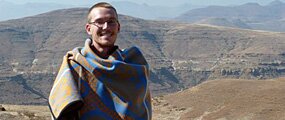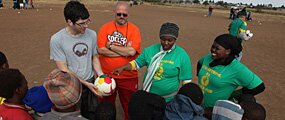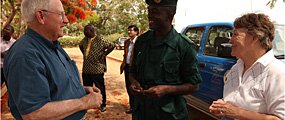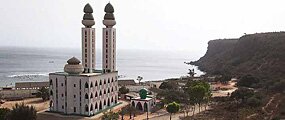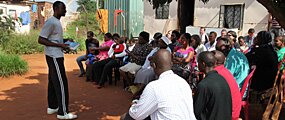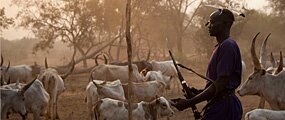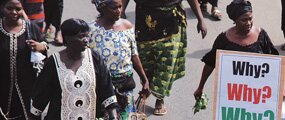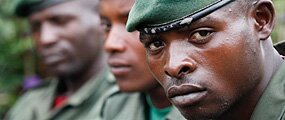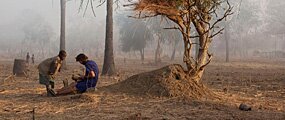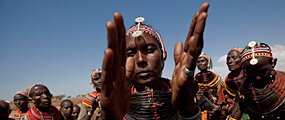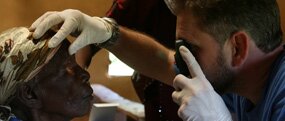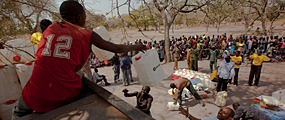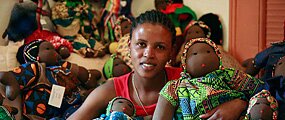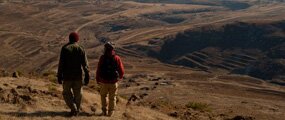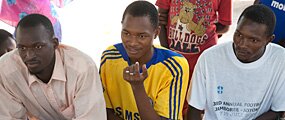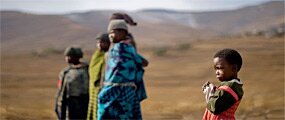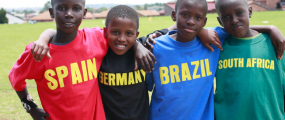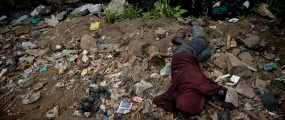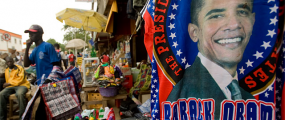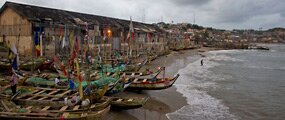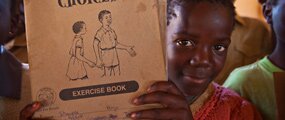People of the Rainforest
Posted October 14, 2010
KEKILALINA, Madagascar – Walking the trail is putting one foot in front of the other, looking down not to trip, slip or fall. Ignored are the majestic mountains rising on all sides and the deep valleys falling below. The wildflowers are not noticed, nor the orchids, plentiful among the rainforest’s trees.
This is not a nature walk, after all. This is a trek with a mission.
There are dozens of villages tucked in the nooks and crannies of these forested mountains, where any visitor is a rarity and the sight of a foreigner is non-existent. Until now.
 IMB missionaries Heather Walker* and Cara Simpson* trek the Ranomafana rainforest of southeast Madagascar to locate the villages of the Tanala, a people group of 900,000 who often work rice fields or sell bananas for a living. Walker and Simpson form the “adventure evangelism and medical missions” component of a team of missionaries and nationals organized to evangelize the Tanala and plant churches among them.
IMB missionaries Heather Walker* and Cara Simpson* trek the Ranomafana rainforest of southeast Madagascar to locate the villages of the Tanala, a people group of 900,000 who often work rice fields or sell bananas for a living. Walker and Simpson form the “adventure evangelism and medical missions” component of a team of missionaries and nationals organized to evangelize the Tanala and plant churches among them.
The team has visited 12 villages so far, trekking anywhere from four to 30 kilometers in a day. Their task is to assess the sanitary conditions and health needs of each village, then develop a strategy for returning to host medical clinics and share Christ.
As Walker and Simpson do the assessments, other members of their team share Bible teachings and organize activities for the village children.
“Why are you here?” is a question the two frequently hear, followed by, “You came all this way just to be with us?” The locals quickly start to accept them because of their willingness to make the long trek, sleep in the village in tents, and eat the same food the villagers eat.
A visit from members of the Tanala team is a novelty for these villagers, providing a welcome break to an otherwise mundane and monotonous existence.
Life is hard for the people of the rainforest, and they work hard in order to survive. Education is a luxury. Electricity is non-existent. Clean water is scarce. Malnutrition is common. Disease is rampant. Unsanitary conditions are normal.
On the surface these challenges are evident. Beneath the surface spiritual darkness pervades.
“There are some very dark places where you can tell that people just do not have a lot of answers,” Walker said. “There are a number of people who have told us they have no idea how to get to heaven. They don’t know what God is like.”
Simpson agrees. “Down here, where the Gospel has not reached yet, there is a sense of heaviness – a darkness that the light of Christ has not yet penetrated – in this entire forest,” she said.
“You can tell Satan has blinded them to the truth.”
 Oftentimes a response to a spiritual question is a blank stare. “They just don’t understand. We are praying that God will open their eyes so they can understand because they have been blinded,” she said.
Oftentimes a response to a spiritual question is a blank stare. “They just don’t understand. We are praying that God will open their eyes so they can understand because they have been blinded,” she said.
As Walker, Simpson and others of the team trek, word of their presence travels fast. This is not surprising, though, since there is a constant stream of villagers going back and forth between home and town carrying stalks of bananas to sell and returning with oil, salt, sugar and other supplies.
By the time the team nears a village, crowds of children gather to accompany them, while other villagers greet them as they arrive.
Houses are made of sticks, mud and thatch, clustered together with little space between them. Narrow dirt pathways crisscross the village. There is no concept of individuality here; everything is communal.
Within the village a witchdoctor sits, quietly contemplating changes that are beyond his control. He is slowly losing his grip on the people; his power is waning. First, Catholic and Lutheran catechists challenged the witchdoctors’ authority all throughout the rainforest; now these Baptists have arrived.
He wonders who these Baptists are and where they come from – especially the foreigners. It was bad enough, he thinks, that over the years the catechists’ influence contributed to the lessening of traditional practices by the people — the sacrifices to ancestral spirits, ceremonies with bones, and charms and fetishes to protect them against sickness and evil spirits. Now these newcomers are challenging his people’s core beliefs!
The Tanala team’s strategy includes chronological Bible storying, designed to address worldview issues and speak at the heart level. Stories from the Bible challenge an individual’s belief system and not just his or her ritualistic practices. The result is a change of the heart, which touches all aspects of a person’s life, including practices. The stories lead to Jesus as God’s plan for a restored relationship with God.
 “Our number one goal is to bring Jesus to the people,” Simpson said. “It does not help at all if we just come here and put a Band-Aid on a hurt knee and lives are not changed. The Gospel is the reason we are here.”
“Our number one goal is to bring Jesus to the people,” Simpson said. “It does not help at all if we just come here and put a Band-Aid on a hurt knee and lives are not changed. The Gospel is the reason we are here.”
For her, the Gospel is more than sharing Christ. It includes going “back to disciple the believers and teach them how to study God’s Word and see churches develop,” she said.
“The people here are very passionate and loving people and I would love to see them use that passion to worship God and worship God alone,” Walker said.
To do that “is going to take people on their knees begging God to send light into the darkness,” Simpson said. “It is going to take people going out and telling the Gospel.”
*name changed for security purposes
Follow Us Online!






